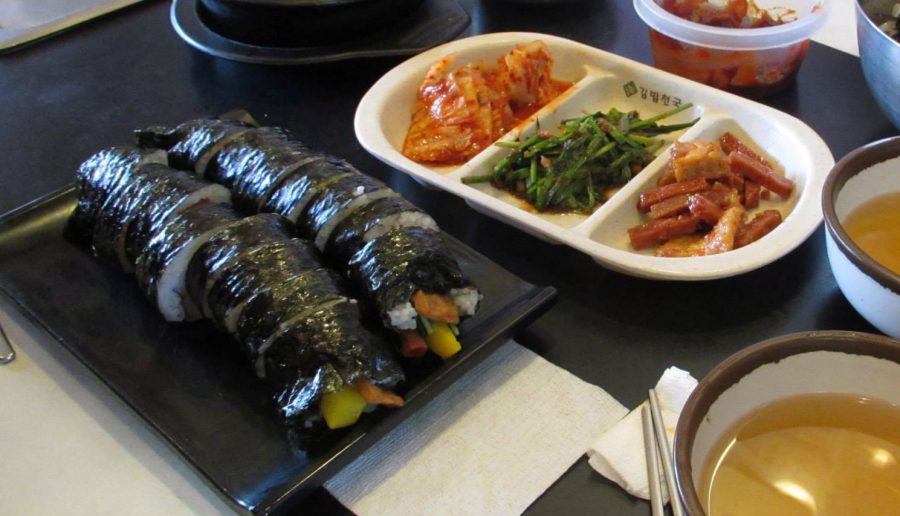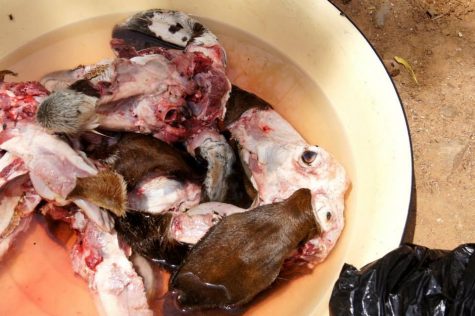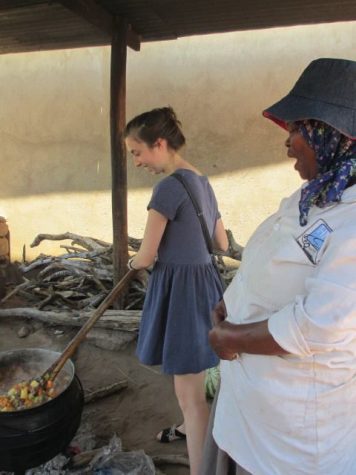SEOUL: Eating on a Student Budget in Korea
Walking down the street in Korea can be a dangerous trip if you’re feeling hungry. There are so many restaurants crammed into the walls of buildings. Each one is armed with different smells that they fire into the crowded streets, aiming at your empty stomach and equally vacant wallet.
However, there is great food still to be had when you are on a tight student budget and I want to focus on a few of the classic cheap Korean dishes.
Kimbap
It is by far the most well-known fairly healthy and cheap dish. Kimbap directly translates to seaweed and rice. One things to never do is refer to kimbap as sushi despite its similar appearance (this does not go over well with Koreans). In reality, kimbap is more comparable to a sandwich and usually contains things such as ham, kimchi, radish and other fresh foods.
Average cost: $1.5-$2
Banchan
Banchan is actually not a meal itself but rather the side dishes that accompany it. Nonetheless, it is important to mention here as meals usually come with many side dishes that will be refilled indefinitely and so it is an easy way to turn a weak meal into something more filling. The two most common side dishes are kimchi and daikon radishes
Kimchi is Korea’s national food and a near constant accompaniment to any meal. Any respectable eating establishment offers kimchi alongside your order for free and without asking. It is typically cabbage that has gone through a fermentation process and is flavored with a pepper paste that gives it the distinctive spicy flavor as well as the red color that means that no Korean meal is safe for white shirts.
Pickled radish is an amazing palate cleanser and great counter to Korea’s signature spicy cuisine. Despite being pickled it is actually most distinguished by its sweet flavor. This makes it a very important tool after having inhaled a large amount of spicy korean food. While it a not as common as kimchi you can expect it more often than not.
Average Cost: Free
Tteokbokki
By far my favorite of the cheap foods, Tteokbokki is the most unique. At first glance the noodles in tteokbokki may appear to be oversized pasta. In fact they are traditional Korean rice cakes called tteok. They are very chewy and contain little flavor but are covered in spicy but sweetened red sauce. The flavor of the sauce is very distinctive Korean, as the spiciness is not as acidic as Mexican while the sweetness of it reminds you of curry without the signature taste and smell that accompany it. Swimming into this sauce along you will find odeng, steamed fish cakes and, if you are lucky, a hard boiled egg.
Average Cost: $2.50
Bibimbap
This is another dish where the name is not very creative. A direct translation would be “mixed rice”. This dish is usually by far the most popular among foreigners as it contains nothing very surprising. Scallions, bulgogi (korean grilled beef), mushrooms, bean sprouts and other assorted vegetables are served in manner similar to a cobb salad, with each ingredient separated on its own. The dish is topped with an egg usually hard boiled but sometimes raw. The proper way to eat this is by adding large amounts of Korean pepper paste and mixing thoroughly.
Average Cost: $3
Conclusion
Fast food has a different meaning in Korea than it does in the United States. In fact, the meaning is more of a direct interpretation. In Texas, fast food is something that can be frozen and reheated or is weighted in oil, preservatives and anything else that helps it slide down your throat easier. In Korea, it is food prepared quickly and cheaply. Often you can still watch it being made and it is every bit as fresh as a more expensive meal. While it is true these meals are not exactly the makings of a perfect diet, it is plain to see that they are a far step up from the options available in the United States at those prices.







